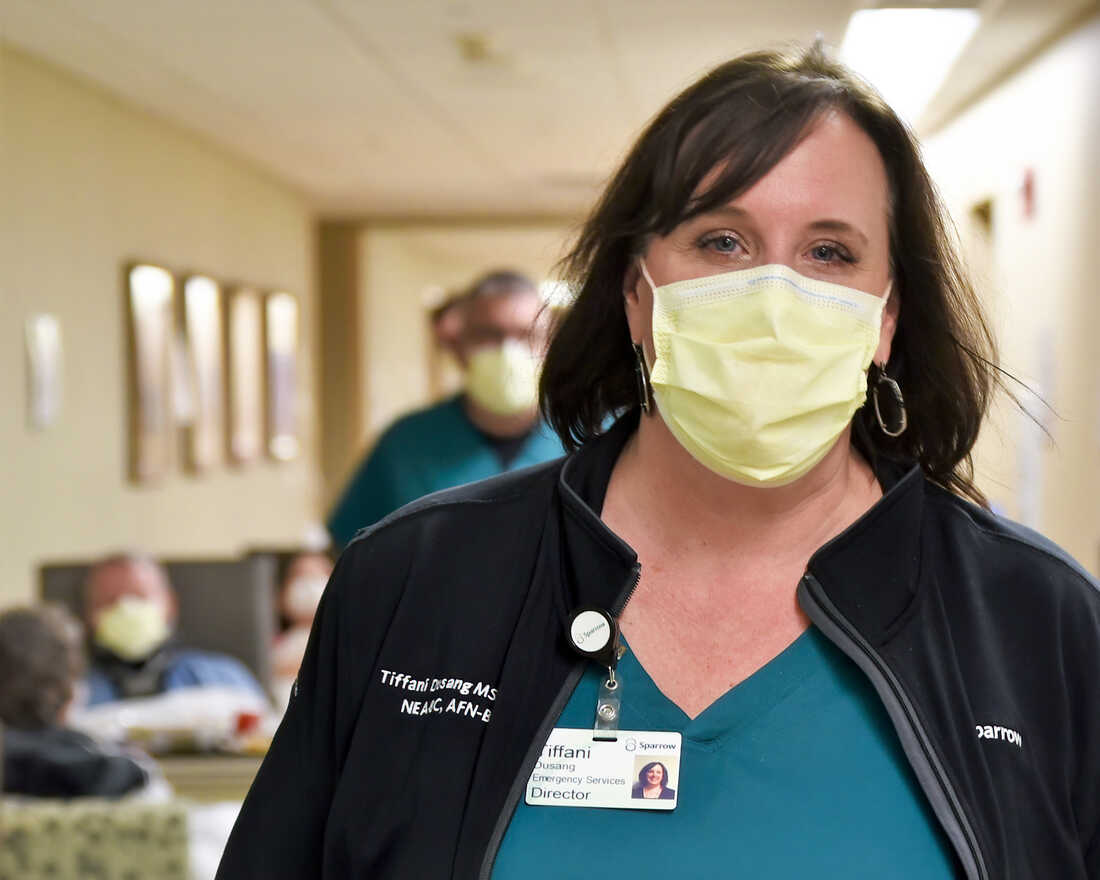Many hospital ERs across the country are overflowing with admissions to the point that patients are being redirected to other facilities.
Overall hospital admissions are up nearly 20 percent, according to the NPR report, despite being down over the summer when people were out in the warmth and sunlight. So what happens when winter really hits? It doesn’t look good for healthcare in the coming months.
It’s a stark contrast to where this emergency department — and thousands others — were at the start of the coronavirus pandemic. Except for initial hot spots like New York City, many ERs across the U.S. were often eerily empty in the spring of 2020. Terrified of contracting COVID-19, people who were sick with other things did their best to stay away from hospitals. Visits to emergency departments dropped to half their normal levels, according to the Epic Health Research Network, and didn’t fully rebound until the summer of 2021.
But now, they’re too full. Even in parts of the country where COVID-19 isn’t overwhelming the health system, patients are showing up to the ER sicker than they were before the pandemic, their diseases more advanced and in need of more complicated care.
Months of treatment delays have exacerbated chronic conditions and worsened symptoms. Doctors and nurses say the severity of illness ranges widely and includes abdominal pain, respiratory problems, blood clots, heart conditions and suicide attempts, among others.
But there’s nowhere to put them all. Emergency departments are ideally meant to be brief ports in a storm, with patients staying just long enough to be sent home with instructions to follow up with their primary care physician or being sufficiently stabilized to be transferred “upstairs” to inpatient units or the intensive care unit.
Except now, those long-term care floors are full too, with a mix of COVID-19 and non-COVID-19 patients. That means people coming to the ER are being warehoused for hours, even days, forcing ER staff to perform long-term care roles they weren’t trained to do.
The claims that because people neglected heath conditions during the pandemic, they are now flooding the ERs as their status becomes more critical.
But look at the main symptoms cited: abdominal pain, respiratory problems, blood clots, heart conditions and suicide attempts.
Except for the last, what do those complaints remind you of? NPR makes special note that ‘many don’t have COVID’.
What is suspect is what they don’t mention.
About three times a week, the ER arrives at a point where it just can’t take any more patients, she explains. Then it sends out the alert for ambulances to divert patients to other hospitals. But that’s a risky move because Sparrow is one of the only hospitals in this part of the state that’s equipped to handle severe traumas. Dusang says it feels like “waving the white flag.”
“But you have to do it when you feel unsafe,” she says, meaning so crowded that the staff can’t provide patients with adequate care. “So although it won’t [entirely] keep ambulances from coming in, at least it gives them that awareness that, ‘Oh, you know, the ED’s in trouble.’ ”
Even patients who arrive by ambulance are not guaranteed a room: One nurse is running triage here, screening for those who absolutely need a bed and those who can be put in the waiting area.
“I hate that we even have to make that determination,” Dusang says. Lately they’ve been pulling out some of the patients who are already in the ER’s rooms, when others arrive who are even more critically ill. “No one likes to take someone out of the privacy of their room and say, ‘We’re going to put you in a hallway because we need to get care to someone else.’ ”
The number of ER patients is mostly back to normal, but patients are so much sicker
This isn’t just happening at Sparrow.
“We are hearing from members in every part of the country,” says Dr. Lisa Moreno, president of the American Academy of Emergency Medicine (AAEM). “The Midwest, the South, the Northeast, the West … they are seeing this exact same phenomenon.”
Although the number of ER visits returned to pre-coronavirus levels this past summer, admission rates, from the ER to the hospital’s inpatient floors, are still almost 20% higher. That’s according to the most recent analysis by the Epic Health Research Network, which pulls data from more than 120 million patients across the country.
“It’s an early indicator that what’s happening in the ED is that we’re seeing more acute cases than we were pre-pandemic,” says Caleb Cox, a data scientist at Epic.
Source: NPR

